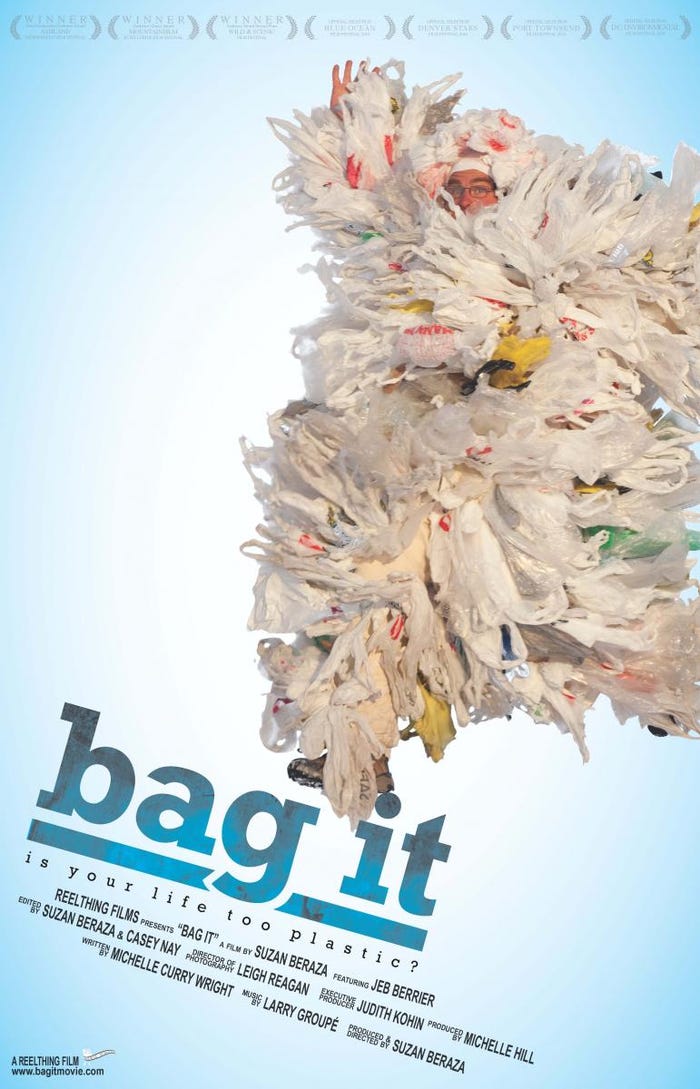Misconceptions about plastics alive and well
Plastic bags, BPA - it's all the same thing, right? If you work in the plastics industry, you know the answer is no. But it's no secret that some politicians, journalists and consumers do not understand the distinction between all the different types of plastics.
March 4, 2013
Plastic bags, BPA - it's all the same thing, right? If you work in the plastics industry, you know the answer is no. But it's no secret that some politicians, journalists and consumers do not understand the distinction between all the different types of plastics.
For instance, I saw an article on Vail Daily talking about an upcoming screening of the documentary, "Bag It." While I worked on my plastic bag series for PlasticsToday, I read about this documentary, which has received some traction and award recognition from various film festivals.
 According to the documentary's website, it follows "everyman" Jeb Berrier as he takes a closer look at "our cultural love affair with plastics." While it seems the documentary is mainly focused on plastic bags (as evident by the title), it said the film goes beyond plastic bags to look at baby bottles, sports equipment and potentially harmful chemicals used in the "plastic-making process."
According to the documentary's website, it follows "everyman" Jeb Berrier as he takes a closer look at "our cultural love affair with plastics." While it seems the documentary is mainly focused on plastic bags (as evident by the title), it said the film goes beyond plastic bags to look at baby bottles, sports equipment and potentially harmful chemicals used in the "plastic-making process."
I have to say I'm a bit curious to watch this documentary, mainly for the fact of its seemingly impossible goal of trying to cover the entire plastic industry in one documentary.
Anyway, in the article for Vail Daily, the writer talks about how the film should motivate people to stop using plastic bags and move to canvas bags.
But the focus quickly shifts to concerns about BPA where Vail's environmental sustainability coordinator Kristen Bertuglia, told the publication: "The thing that surprised me most in 'Bag It' was how quickly bisphenol A can build up in your body by using so-called normal products in our everyday lives - like using standard sunblock, eating soup from a can, using an aerosol, microwaving in microwave-safe dishes - and then how quickly changing these habits can lower the blood levels of BPA to almost nonexistent in a very short time."
Then the article immediately goes back to talking about plastic bags.
As I mentioned, I haven't seen the documentary so I can't comment on how they present their information and research. However, I've seen countless articles from various media publications around the world group together BPA and plastics, which can cause confusion about which type of plastics actually could leech BPA.
Listen, there's no denying that BPA is a subject of controversy. Some studies have found links between BPA and cardiovascular disease, obesity, and possibly diabetes. Other studies indicate BPA exposure represents no significant risk to human health.
As packaging editor for PlasticsToday, I've covered BPA extensively and last year, I worked with Packaging Digest, our sister publication, on an in-depth feature about BPA in packaging.
I brought this up last year, but I noticed that you rarely see BPA described as a synthetic estrogen used to produce polycarbonate (PC) polymers and epoxy resins, or that polycarbonate is produced by the reaction of BPA and phosgene COCl2. Notice the term PC, not just "plastics." Generally speaking, it seems that some consumers believe that all plastics have the potential to carry BPA.
I've even read articles try to claim that plastic shopping bags contain BPA. Traditional plastic shopping bags are made from polyethylene, which is produced from the monomer ethylene. In the U.S, ethylene is primarily made of ethane, a waste by-product obtained from natural gas refining, meaning that domestically produced plastic bags are not made of oil. Articles that connect plastic shopping bags to BPA, or petroleum for that matter, are inaccurate.
Another example of this misconception was when Starbucks announced its reusable plastic cup, which is made from PP, another material with no link to BPA. Some applauded the new packaging, while others warned people not to use it because of "BPA risks."
When I interviewed Jim Hanna, director of environmental impact for Starbucks, he talked about an increased need to educate consumers about BPA when it comes to reusable food packaging. He acknowledged that the food industry, as a whole, could do better to educate consumers about that.
"There is opportunity for clarification and a lot of work and improvement to be done so customers can understand the differences between the plastic resins, such as which ones contain BPA and which don't," he said. "PP is our resin of choice due to the safety of the product, there's no question it's a good plastic to work with."
Maybe there will be a time when all plastics aren't grouped together as a "toxic" chemical. In my opinion, that will start when fellow journalists do a little research on the different types of plastics before putting one label on all plastics and presenting it to the public as fact.
About the Author(s)
You May Also Like


